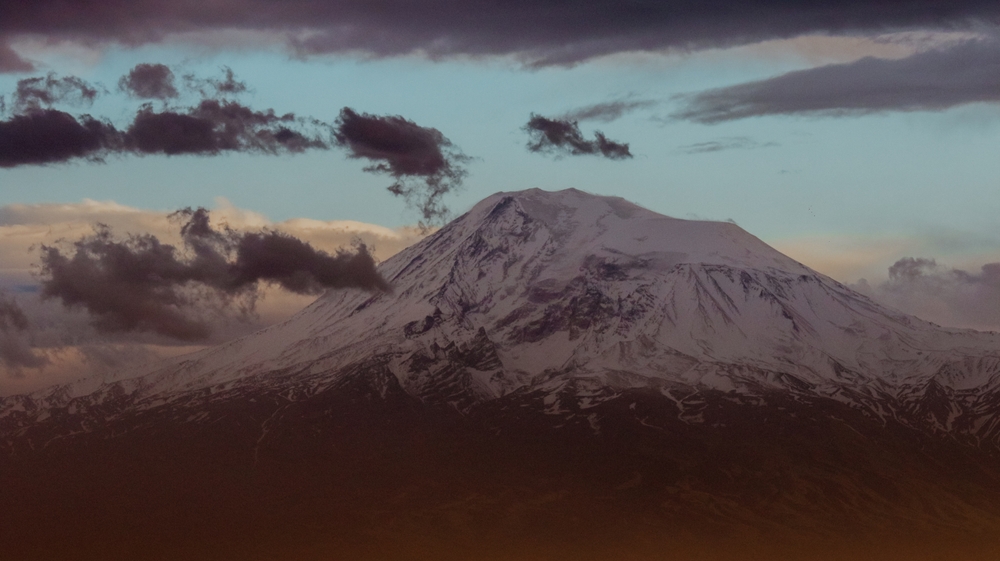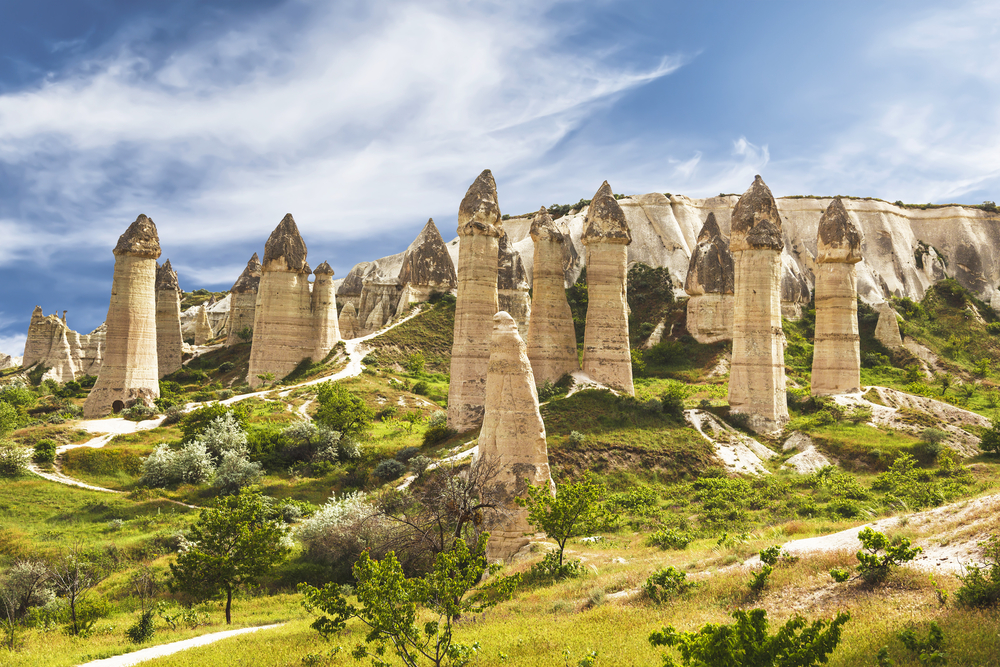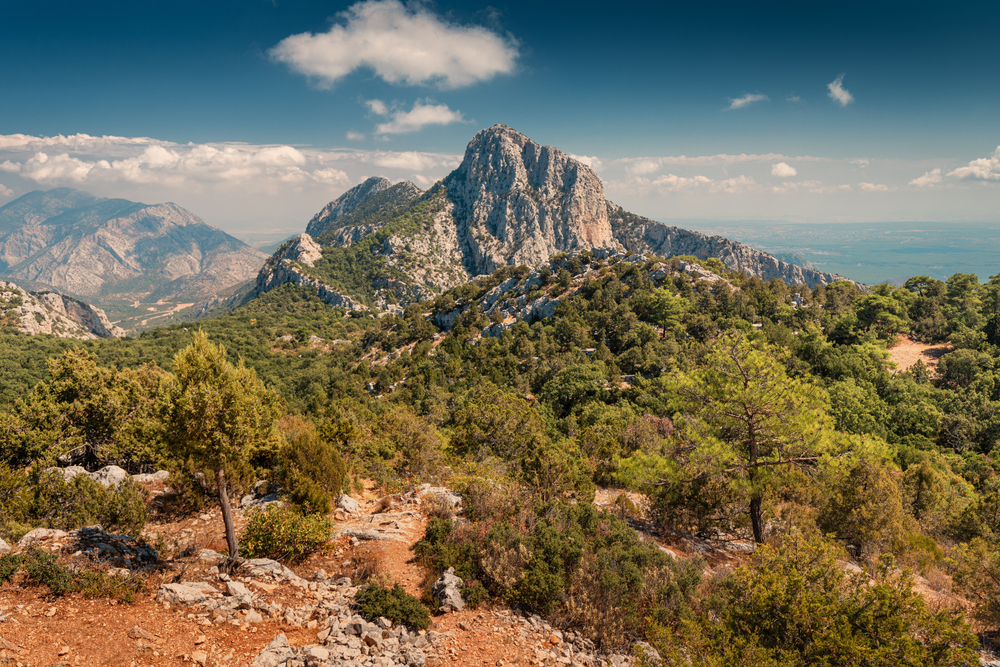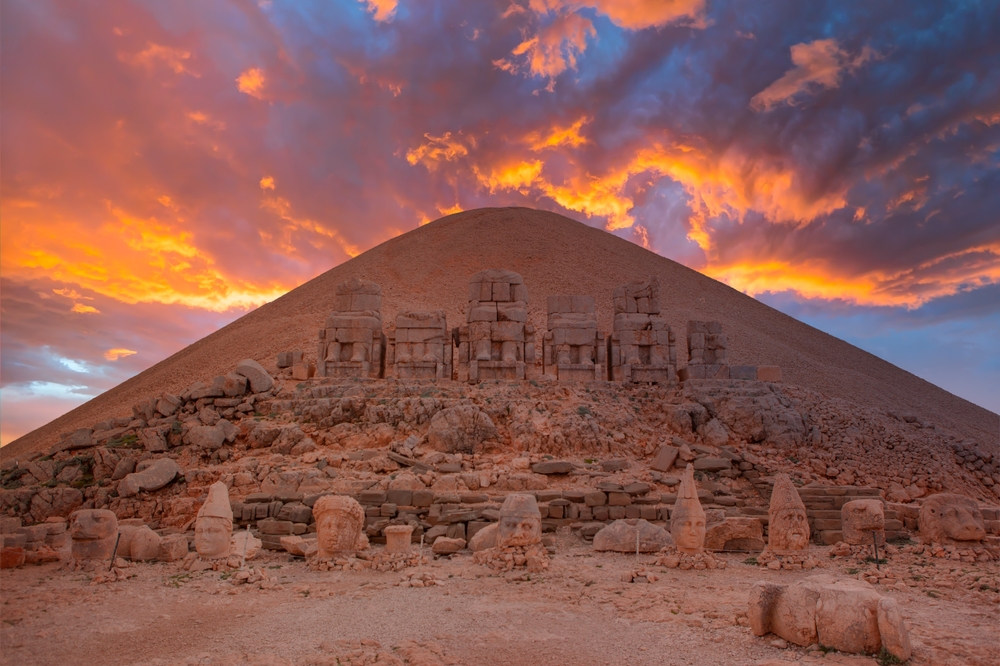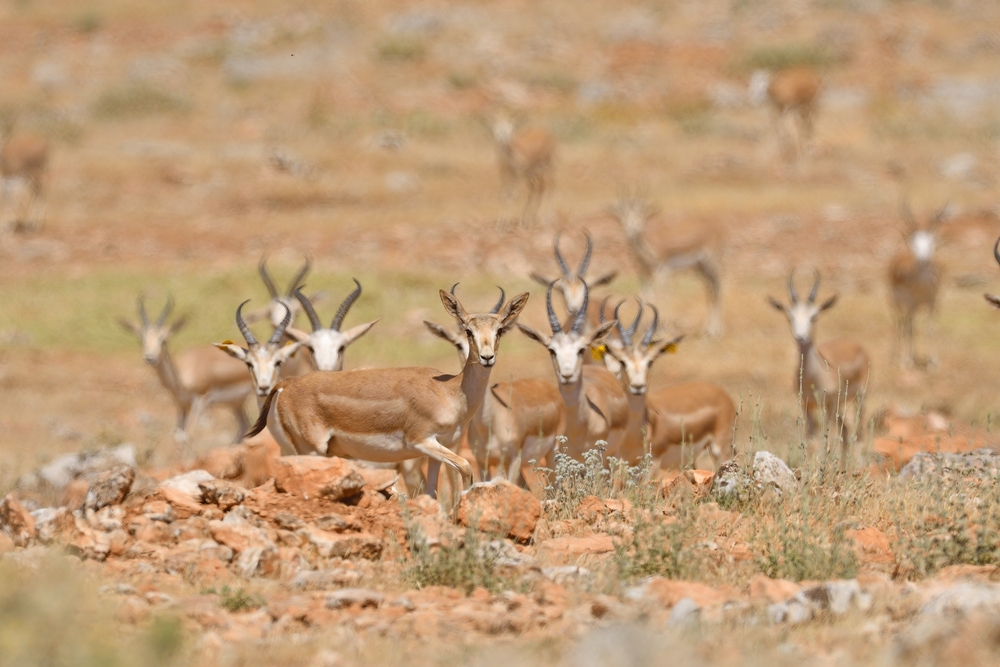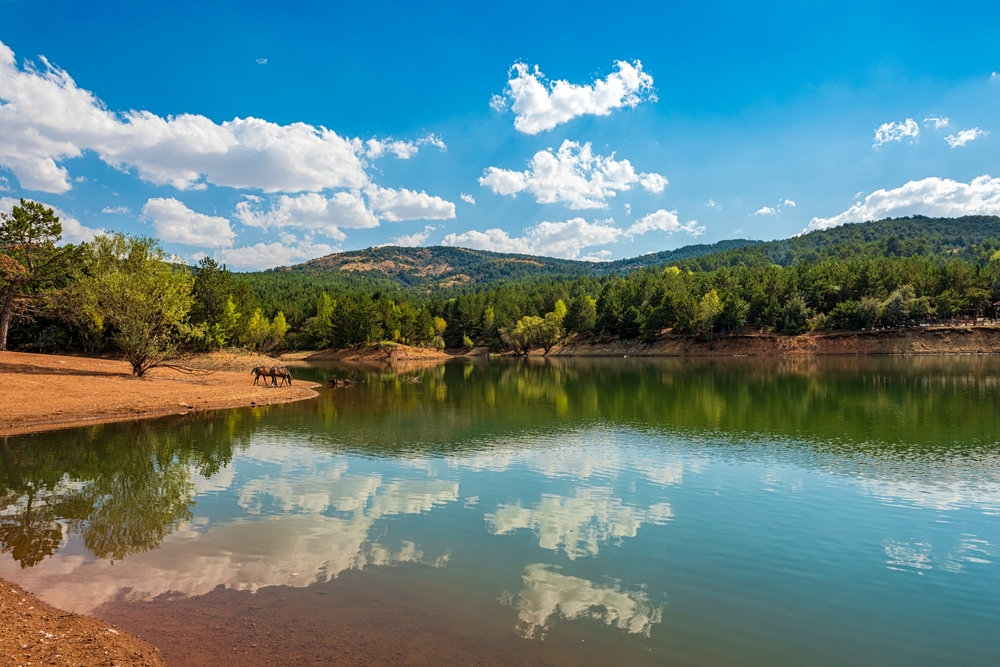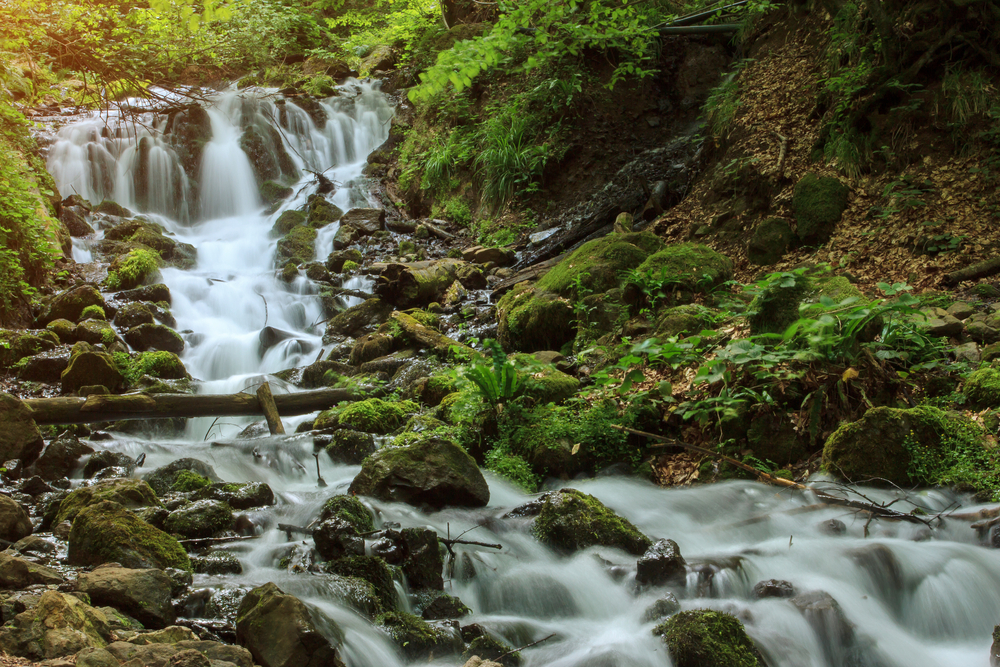Mount Ararat Overview
Mount Ararat National Park, known in Turkish as Ağrı Dağı Milli Parkı, is located in eastern Turkey within the Iğdır and Ağrı provinces, near the borders with Armenia and Iran.
Covering an expansive area of approximately 132 square miles (342 square kilometers), the park encompasses Turkey’s highest peak, Mount Ararat (Ağrı Dağı), which soars to an elevation of 16,854 feet (5,137 meters). This massive, dormant stratovolcano dominates the landscape with its snow-capped summit, steep slopes, and glacier-filled ridges. To the southeast lies Little Ararat (Küçük Ağrı Dağı), a secondary peak that rises to 12,782 feet (3,896 meters).
The terrain within the park ranges from high alpine meadows and rugged volcanic rock fields to steep valleys and subalpine grasslands, offering one of the most striking and dramatic landscapes in the country. Vegetation is sparse at higher elevations but becomes more diverse and abundant in lower areas, where wildflowers, grasses, and patches of juniper and alpine shrubs flourish.
The park’s varied elevations and isolated terrain support a range of wildlife, some of which are specially adapted to its extreme environment. Mammals such as brown bears, wild goats, lynxes, wolves, and red foxes inhabit the more remote and forested valleys.
The upper elevations offer refuge to species like the bezoar ibex, while the lower plains and foothills are frequented by hares and hedgehogs. The region is also a haven for birdlife, particularly birds of prey. Golden eagles, lammergeiers (bearded vultures), and peregrine falcons are often seen gliding along the cliffs and ridgelines. Migratory birds pass through the area in spring and autumn, taking advantage of the high-altitude resting grounds.
One of the park’s most famous and culturally significant features is the association of Mount Ararat with the legend of Noah’s Ark, believed by many traditions to have come to rest on its slopes after the great flood. This connection draws not only nature lovers but also those with religious and historical interests.
Though no archaeological evidence has confirmed the story, the symbolic power of the mountain contributes to its mystique and appeal. The sheer scale and solitary presence of Mount Ararat make it a natural monument in its own right.
Visitors to Mount Ararat National Park primarily engage through climbing and mountaineering. The ascent of Mount Ararat is a major draw for experienced climbers, requiring proper permits, guides, and acclimatization due to its high altitude and challenging conditions.
In addition to climbing, the park offers opportunities for hiking, birdwatching, photography, and cultural exploration in nearby villages. Summer is the main season for activities, as snow and ice make much of the park inaccessible in winter. The surrounding plains and lower slopes provide excellent spots for guided walks and eco-tourism initiatives.
Conservation efforts in the park are focused on protecting its fragile alpine ecosystems and rare species from the pressures of tourism and illegal hunting. Border proximity and geopolitical sensitivities also pose unique challenges to management and monitoring.
However, recent collaborations between local authorities, conservationists, and mountaineering groups have led to increased awareness and protective measures. Controlled access, guided climbs, and education programs have contributed to preserving the park’s ecological and cultural heritage while allowing safe, low-impact visitor engagement.








































































